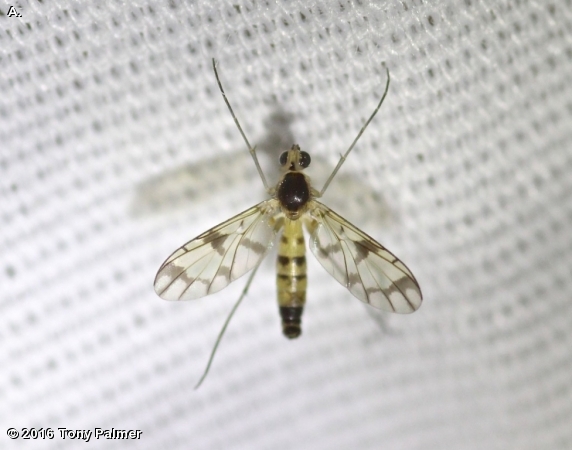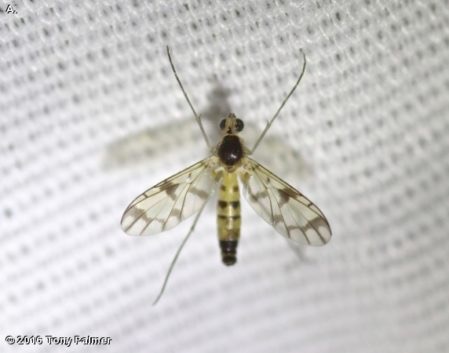
A small fly, about 1/4 inch (6 mm) long with very long antennae, brown thorax and abdomen banded with dark brown and cream colors. The last two segments are black. This individual is probably a female. Males typically have a more slender abdomen and some have obvious claspers at the end.
Predatory fungus gnats, in general, are common in our environment. They are not often seen because they are small and are active during late afternoon and nighttime hours. They inhabit damp, dark places in forests, often under bracket fungi. The individual shown here was photographed in mid-June 2016 when it was attracted to lights set up to attract moths.
The larvae of Predatory Fungus Gnats (click here to see one) are worm-like creatures that inhabit dark, damp places and are predaceous. They spin hygroscopic webs (webs that absorb moisture) to collect small invertebrate prey. They kill their prey with acidic fluid (oxalic acid) deposited in droplets on their web.
Disclaimer: The content of NatureSearch is provided by dedicated volunteer Naturalists of Fontenelle Forest who strive to provide the most accurate information available. Contributors of the images retain their copyrights. The point of contact for this page is: Loren Padelford.

